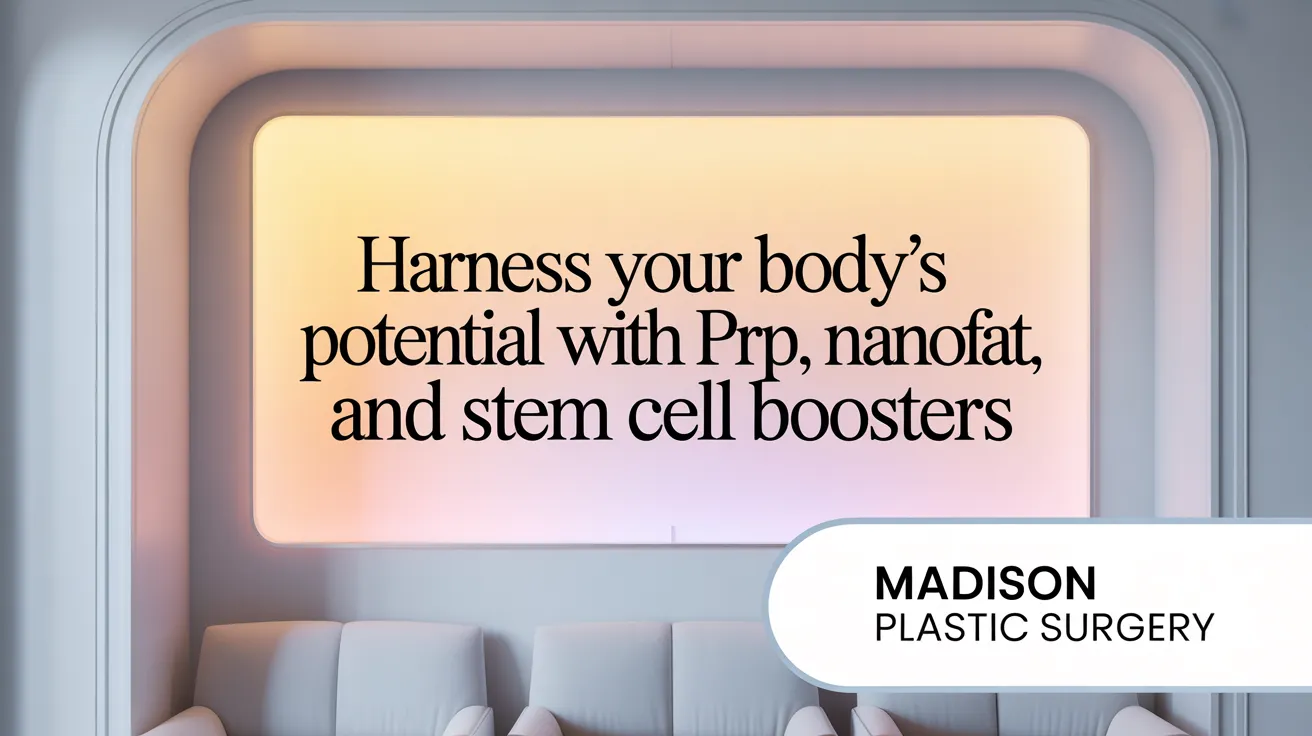Embracing Natural-Looking Facial Rejuvenation
In the quest for youthful skin, many seek facial rejuvenation techniques that enhance appearance while preserving natural expressions and feel. Advances in both surgical and non-surgical methods now offer tailored solutions that focus on subtle improvements, supporting skin health and facial structure. This article explores the most effective natural-looking facial rejuvenation treatments, balancing efficacy and safety to maintain an authentic, refreshed look.
Understanding the Science of Facial Aging and Natural Rejuvenation

What causes the visible signs of facial aging?
Facial aging is mainly driven by a decline in essential skin components: collagen, elastin, and hyaluronic acid. This process typically begins in the late 20s to early 30s and results in common aging signs like wrinkles, reduced skin firmness, and sagging. The skin's middle layer, the dermis, loses these proteins that give it structure and elasticity, causing laxity and fine lines.
Additionally, facial fat pads that normally support youthful contours gradually shift downward. This downward shift leads to volume loss in the cheeks and hollows under the eyes, contributing to drooping skin and altered facial shapes (Facial rejuvenation procedures).
How do natural facial rejuvenation methods work?
Natural rejuvenation treatments work by stimulating the skin’s inherent ability to repair and regenerate. Techniques like microneedling create tiny, controlled micro-injuries that trigger collagen and elastin production. Chemical peels exfoliate the skin's outer layers to encourage new cell growth, while laser therapies use focused light energy to promote collagen synthesis beneath the surface.
Platelet-Rich Plasma (PRP) therapy uses the patient's own blood platelets, which release growth factors that enhance collagen production and tissue repair. These approaches lead to gradual improvements in skin texture, elasticity, and volume, achieving subtle and natural-looking rejuvenation without surgical intervention.
Why is individualized treatment important?
Because aging affects each person’s skin and facial structure differently, treatment plans must be personalized. Experts consider factors such as the degree of collagen loss, extent of volume reduction, skin type, and individual goals. Customizing therapies ensures optimal stimulation of natural collagen, enhances skin health, and addresses specific concerns like wrinkles or volume loss for the best natural rejuvenation outcomes (Non-Surgical Facial Rejuvenation Guide).
Non-Surgical Facial Rejuvenation: Safe, Effective, and Minimal Downtime

What are the popular non-surgical facial rejuvenation treatments that provide natural-looking results?
Popular non-surgical facial rejuvenation treatments include a variety of treatments designed to enhance the skin's appearance and reduce signs of aging while maintaining natural facial expressions. Botox and Dysport injections use botulinum toxin to relax muscles, smoothing out dynamic wrinkles particularly around the forehead and eyes. Dermal fillers, especially those made from hyaluronic acid, restore facial volume and improve contours, with effects lasting several months.
Laser skin resurfacing, available in ablative and non-ablative forms, works to improve skin texture and stimulate collagen production, thus reducing wrinkles and pigmentation issues. Chemical peels exfoliate damaged outer skin layers using acids to reveal fresher skin beneath. Microneedling creates controlled micro-injuries to boost collagen and elastin production, improving texture and fine lines. Lastly, microdermabrasion gently exfoliates the skin surface, enhancing tone and reducing minor imperfections. These treatments are safe and offer subtle, natural-looking improvements with minimal recovery time when performed by trained professionals.
How safe are these non-invasive treatments and what is their typical recovery like?
Safety is a top priority in non-surgical facial rejuvenation. When the treatments are administered by board-certified professionals, risks are low. Common side effects include mild redness, swelling, or bruising, which typically resolve quickly. Recovery varies depending on the procedure; Botox injections often allow immediate return to daily activities, while laser resurfacing and chemical peels might require days to weeks of healing due to skin peeling and sensitivity.
Post-treatment care, including diligent sun protection and following provided skincare instructions, is essential to prevent complications such as pigmentation changes and to maximize long-term benefits. With proper technique and care, these treatments offer an effective, safe route to refreshed, youthful skin without the need for surgery or extensive downtime.
Innovative and Natural Skin Boosters: PRP and Nanofat Injections

What are PRP and PRF therapies and how do they contribute to natural facial rejuvenation?
Platelet-Rich Plasma (PRP therapy) uses a concentrate of the patient’s own platelets that are rich in growth factors. These growth factors stimulate collagen and elastin production, essential proteins for maintaining skin firmness and elasticity. PRP improves skin texture, reduces fine lines, and promotes a smoother, more youthful complexion. Platelet-Rich Fibrin (PRF) is a related but more advanced treatment. It is a fibrin clot form of PRP with higher concentrations of platelets, white blood cells, and mesenchymal stem cells. PRF provides a gradual release of growth factors over time, which supports superior tissue regeneration and skin tightening. Both treatments rely on natural processes and avoid synthetic substances, making them safe and suitable for various skin types.
How do nanofat injections work in facial rejuvenation?
Nanofat injections use mechanically emulsified fat harvested from the patient, which contains adipose-derived stem cells known for their regenerative potential. Unlike traditional fat grafting that restores volume, nanofat targets skin quality by promoting collagen deposition, enhancing skin elasticity, and thickening the dermal layer. This makes nanofat especially effective for treating fine wrinkles, dark circles, and improving overall skin texture in delicate facial areas such as under the eyes. Offering a natural alternative to fillers, nanofat injections help rejuvenate the skin by harnessing the body's own regenerative capabilities, leading to subtle and lasting improvements.
Both PRP/PRF and nanofat injections represent cutting-edge, natural skin boosters that stimulate collagen and tissue regeneration without surgery or synthetic inputs, providing a safe, effective option for those seeking gradual and natural-looking facial rejuvenation.
Advanced Injectable Treatments for Subtle, Natural Enhancements

What are the latest trends in injectable treatments for natural-looking facial rejuvenation?
Innovations in injectable facial rejuvenation have transformed how subtle and effective enhancements are achieved. Micro-Botox and Baby Botox represent advanced Botox techniques that employ smaller doses to smooth fine lines without inhibiting facial expressions. These targeted applications extend beyond wrinkle reduction to include jawline slimming, lip flipping, and gummy smile correction.
Dermal fillers have also evolved, with new formulations lasting up to two years and designed not only to restore volume but also to stimulate collagen production and improve skin hydration. This dual action results in more youthful, glowing skin alongside contour restoration.
Combination therapies are increasingly favored, where Botox is jointly used with fillers, platelet-rich plasma (PRP), radiofrequency microneedling, laser resurfacing, and chemical peels. This multi-modal approach enhances natural contours and rejuvenates various skin layers to create balanced, harmonious outcomes.
How do these injectables maintain facial authenticity?
Maintaining natural facial dynamics is a priority in modern injectable treatments. Precise dosing and the use of refined delivery tools like cannulas minimize risks of overfilling or unnatural stiffness. Botox works to relax muscle movements that cause wrinkles, while fillers gently replenish lost volume without exaggerating features.
Injectables are strategically placed to enhance one's unique anatomical markers, supporting authentic expressions and preserving natural skin movement. This ensures patients achieve a refreshed, well-rested appearance instead of a frozen or overdone look, aligning with current preferences for subtle and authentic facial rejuvenation.
Laser and Light-Based Therapies: Stimulating Collagen with Precision
How do laser and light therapies contribute to natural facial rejuvenation?
Laser and light-based therapies play a significant role in natural facial rejuvenation by targeting damaged skin and encouraging the skin's own repair mechanisms. Ablative laser resurfacing, such as fractional CO2 lasers, precisely vaporizes the outer skin layers while heating underlying tissues. This stimulates collagen remodeling and skin tightening, leading to smoother and firmer skin. These ablative treatments offer dramatic improvements in wrinkles, scars, and skin laxity.
In contrast, non-ablative laser therapies heat deeper skin layers without destroying the surface. They promote collagen production and gradual improvements in skin texture and tone with minimal downtime. IPL (Intense Pulsed Light) photorejuvenation is another light-based option that targets pigmentation imperfections and vascular lesions, enhancing overall skin tone and reducing discoloration.
Together, these approaches can be customized based on individual skin concerns to achieve subtle, natural-looking rejuvenation that improves skin texture, diminishes pigmentation irregularities, and revitalizes the complexion over time.
What are the risks and post-treatment care for laser resurfacing?
Laser resurfacing treatments carry potential side effects such as redness, swelling, itching, pigmentation changes (hyperpigmentation or hypopigmentation), and very rarely, scarring. Correct patient selection is essential, including assessing skin type, medical history, and prior conditions like herpes simplex infections. Preparation might involve antiviral medication if needed and strict sun avoidance before the procedure.
After treatment, diligent post-care is critical. This includes moisturizing the treated area, protecting skin from sun exposure with high SPF sunscreen, and avoiding irritants or harsh skincare products that could disrupt healing. Recovery time can range from several days to a few weeks, depending on the laser's aggressiveness.
Adhering closely to professional advice helps minimize risks, supports comfortable healing, and maintains the improvements achieved by the therapy, contributing to lasting, natural rejuvenation results.
Minimally Invasive Techniques: Thread Lifts and Fat Grafting
What are thread lifts and how do they support natural facial rejuvenation?
Thread lifts involve the insertion of dissolvable sutures beneath the skin to lift and tighten sagging facial tissues. These threads anchor the skin to underlying structural layers such as the SMAS (superficial musculoaponeurotic system), providing immediate uplift and improved facial contours. Performed under local anesthesia, thread lifts are minimally invasive with minimal downtime. They offer a natural enhancement by preserving facial movement and expression. The results typically last several months up to a couple of years, making them a popular option for those seeking subtle, non-surgical rejuvenation without the risks and recovery associated with surgery (Minimally invasive facial rejuvenation techniques, Natural facelift techniques).
How does fat grafting contribute to long-lasting rejuvenation?
Fat grafting, also known as fat transfer, uses the patient’s own fat harvested from donor sites (like the abdomen or thighs) to restore facial volume lost with aging. Techniques such as microfat and nanofat grafting improve fat survival and allow treatment at multiple skin levels. Microfat replenishes deeper volume loss to enhance contours, while nanofat addresses superficial concerns such as fine wrinkles, skin texture, and dark circles around the eyes. This method leads to semi-permanent results, generally lasting longer than synthetic fillers, though some resorption occurs. Because the injected material is natural tissue, it offers superior texture, biocompatibility, and may stimulate collagen production, contributing to firmer, rejuvenated skin (regenerative skin changes, Facial rejuvenation techniques).
Both thread lifts and fat grafting serve to tighten skin and restore youthful volume, combining to improve overall facial architecture. Their minimally invasive nature and potential for natural, lasting improvements make them attractive options for patients looking to rejuvenate without extensive surgical intervention (Nonsurgical facelift overview).
Surgical Facial Rejuvenation: When Natural Meets Lasting
How do surgical procedures achieve natural-looking facial rejuvenation?
Facial rejuvenation surgery, including facelift, brow lift, eyelid surgery (blepharoplasty), and neck lift, targets deeper structural aging signs. Facelifts focus on repositioning the superficial musculoaponeurotic system (SMAS) layer, lifting fat pads, and trimming excess skin to correct sagging skin, jowls, and loose neck tissues. Brow lifts elevate drooping brows to open the eye area, while eyelid surgery (blepharoplasty) removes excess skin and reduces puffiness, enhancing the eyes' shape and youthful appearance.
Surgeons skilled in these procedures prioritize natural outcomes, avoiding the overly tight or 'windblown' look seen in outdated techniques. The result is a balanced, refreshed face that maintains individual facial expressions. Recovery typically takes about 10 to 14 days, allowing patients to return to normal activities without prolonged downtime.
Can surgical and non-surgical treatments be combined?
Combining surgical procedures with non-surgical facial rejuvenation treatments, such as Botox, dermal fillers, laser resurfacing, or platelet-rich plasma (PRP) therapy, is common and advantageous. This multimodal approach addresses aging signs on multiple levels: surgery improves structural and skin laxity issues, while non-surgical modalities enhance skin texture, volume, and wrinkle smoothing.
Such integration allows for comprehensive rejuvenation that extends surgical results and promotes a natural, youthful look. Non-invasive treatments can be strategically applied before or after surgery to maintain results and improve skin quality, making facial rejuvenation a personalized, versatile process tailored to individual needs.
Achieving Timeless, Natural Beauty through Personalized Rejuvenation
Facial rejuvenation today balances cutting-edge science and artistry to provide natural, subtle improvements that enhance skin health, restore youthful volume, and refine facial contours. Through a combination of non-invasive therapies, innovative injectables, regenerative treatments like PRP and nanofat, precise laser procedures, and when needed, skillful surgical interventions, individuals can achieve lasting results without sacrificing authenticity or expression. Personalized treatment plans guided by experienced professionals ensure safe, effective outcomes that help individuals look fresher, radiant, and confidently themselves for years to come.
